Featured Destination – Oakhill, Cromford.

Oakhill – where modern Heritage meets a warm Derbyshire welcome!
Oakhill, a Georgian-style house, is a beautiful Grade II Listed building built by the Arkwright family in the mid-19th Century for the cotton merchant with many original features remaining. It is now a family-owned boutique hotel, in the heart of the Derwent Valley UNESCO World Heritage Site.
Oakhill offers visitors and guests a luxurious, yet relaxed, place to dine, drink and stay whilst exploring the beautiful Peak District. Oakhill has 15 elegantly designed bedrooms, which include 2 family suites, offering peaceful and relaxing accommodation.
We serve breakfast, lunch, dinner and afternoon tea in our elegant dining room, overlooking our beautiful garden. We pride ourselves on using locally sourced quality ingredients wherever possible.
Our bar is open from 8am daily. Call for coffee, and homemade cake. Enjoy a drink in our bar, lounge, or beautiful garden.
LOCATION: Oakhill, Intake Lane, Cromford, Matlock, Derbyshire DE4 3RH
Email: info@oakhillcromford.co.uk
Telephone: 01629 822211
Website: www.oakhillcromford.co.uk
Arkwright’s Cromford Mills
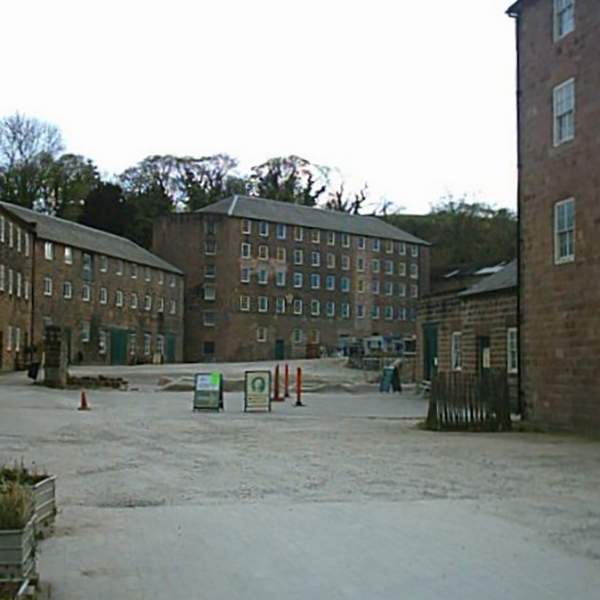
Cromford Mill is the world’s first water-powered cotton spinning mill, developed by Richard Arkwright in 1771 in Cromford, Derbyshire, England. The mill structure is classified as a Grade I listed building. It is now the centrepiece of the Derwent Valley Mills UNESCO World Heritage Site, and is a multi-use visitor centre with shops, galleries, restaurants and cafes.
Cromford Mill (2021) Wikipedia.
Available at:
en.wikipedia.org/wiki/Cromford_Mill
(Accessed: 21 Jan 2022)
Ashbourne

Ashbourne is a market town in the Derbyshire Dales, England, with a population of 8,377 in the 2011 census, estimated at 9,163 in 2019. It contains many historical buildings and independent shops and offers a historic annual Shrovetide football match. Its position near the southern edge of the Peak District makes it the closest town to Dovedale, to which it is sometimes referred as the gateway to the Peak District.
Ashbourne, Derbyshire (2021) Wikipedia.
Available at:
en.wikipedia.org/wiki/Ashbourne,_Derbyshire
(Accessed: 21 Jan 2022)
Bakewell
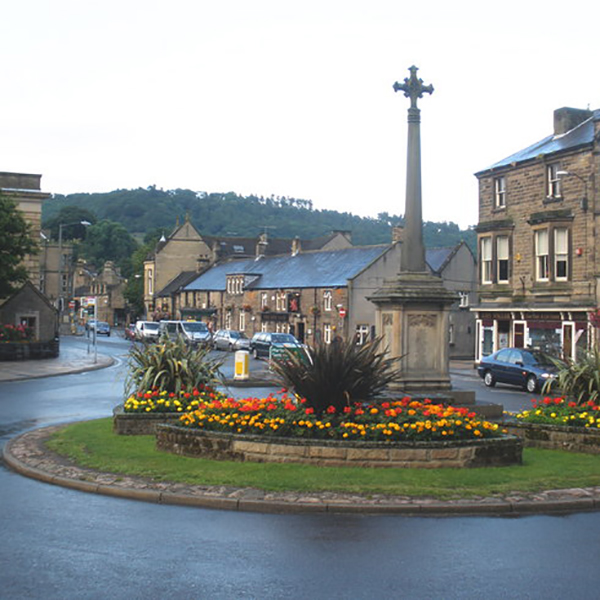
Bakewell is a market town and civil parish in the Derbyshire Dales district of Derbyshire, England, known also for its local Bakewell pudding. It lies on the River Wye, about 13 miles (21 km) south-west of Sheffield. In the 2011 census, the population of the civil parish appeared as 3,949. It was estimated at 3,695 in 2019. The town is close to the tourist attractions of Chatsworth House and Haddon Hall.
Bakewell (2021) Wikipedia.
Available at:
en.wikipedia.org/wiki/Calke_Abbey
(Accessed: 21 Jan 2022)
Bolsover Castle

Bolsover Castle is in the town of Bolsover, in the north-east of the English county of Derbyshire. Built in the early 17th century, the present castle lies on the earthworks and ruins of the 12th-century medieval castle; the first structure of the present castle was built between 1612 and 1617 by Sir Charles Cavendish. The site is now in the care of the English Heritage charity, as both a Grade I listed building and a Scheduled Ancient Monument.
Bolsover Castle (2022) Wikipedia.
Available at:
en.wikipedia.org/wiki/Bolsover_Castle
(Accessed: 21 Jan 2022)
Buxton

Buxton is a spa town in the Borough of High Peak, Derbyshire, England. It is England’s highest market town at some 1,000 feet (300 m) above sea level. It lies close to Cheshire to the west and Staffordshire to the south on the edge of the Peak District National Park. The municipal borough merged in 1974 with places that included Glossop to form the local government district and borough of High Peak. The town population was 22,115 at the 2011 Census. Sights include Poole’s Cavern, a limestone cavern, St Ann’s Well, fed by a geothermal spring bottled by Buxton Mineral Water Company, and Georgian buildings round John Carr’s restored Buxton Crescent, including Buxton Baths. Also notable is Frank Matcham’s Buxton Opera House. The Devonshire Campus of the University of Derby occupies historic premises. Buxton is twinned with Oignies, France, and Bad Nauheim, Germany.
Buxton (2022) Wikipedia.
Available at:
en.wikipedia.org/wiki/Buxton
(Accessed: 21 Jan 2022)
Calke Abbey

Calke Abbey is a Grade I listed country house near Ticknall, Derbyshire, England, in the care of the charitable National Trust.
The site was an Augustinian priory from the 12th century until its dissolution by Henry VIII. The present building, named Calke Abbey in 1808, was never actually an abbey, but is a Baroque mansion built between 1701 and 1704.
The house was owned by the Harpur family for nearly 300 years until it was passed to the Trust in 1985 in lieu of death duties. Today, the house is open to the public and many of its rooms are deliberately displayed in the state of decline in which the house was handed to the Trust.
Calke Abbey (2021) Wikipedia.
Available at:
en.wikipedia.org/wiki/Calke_Abbey
(Accessed: 21 Jan 2022)
Chatsworth House

Chatsworth House is a stately home in the Derbyshire Dales, 3.5 miles (5.6 km) north-east of Bakewell and 9 miles (14 km) west of Chesterfield, England. The seat of the Duke of Devonshire, it has belonged to the Cavendish family since 1549. It stands on the east bank of the River Derwent, across from hills between the Derwent and Wye valleys, amid parkland backed by wooded hills that rise to heather moorland. The house holds major collections of paintings, furniture, Old Master drawings, neoclassical sculptures and books. Chosen several times as Britain’s favourite country house, it is a Grade I listed property from the 18th century, altered in the 19th Century. In 2011–2012 it underwent a £14-million restoration. The owner is the Chatsworth House Trust, an independent charitable foundation, on behalf of the Cavendish family.
Chatsworth House (2022) Wikipedia.
Available at:
en.wikipedia.org/wiki/Chatsworth_House
(Accessed: 21 Jan 2022)
Chesterfield

Chesterfield is a large market town and unparished area in the Borough of Chesterfield, Derbyshire, England, 24 miles (39 km) north of Derby and 11 miles (18 km) south of Sheffield at the confluence of the River Rother and River Hipper. In 2011, the built-up-area subdivision had a population of 88,483, making it Derbyshire’s second largest settlement after Derby. Its borough, including Whittington, Brimington and Staveley, had a population of 103,801 in 2011. In 2011, the unparished area had a population of 76,753. It has been traced to a transitory Roman fort of the 1st century CE. The name of the later Anglo-Saxon village comes from the Old English ceaster (Roman fort) and feld (pasture). It has a sizeable street market three days a week. The town sits on an old coalfield, but little visual evidence of mining remains. Its main landmark is the crooked spire of the Church of St Mary and All Saints.
Chesterfield (2022) Wikipedia.
Available at:
en.wikipedia.org/wiki/Chesterfield,_Derbyshire
(Accessed: 21 Jan 2022)
Crich Tramway Village

The National Tramway Museum (trading as Crich Tramway Village) is a tram museum located at Crich, Derbyshire, England. The museum contains over 60 (mainly British) trams built between 1873 and 1982 and is set within a recreated period village containing a working pub, cafe, old-style sweetshop and tram depots. The museum’s collection of trams runs through the village-setting with visitors transported out into the local countryside and back. The museum is operated by the Tramway Museum Society, a registered charity.
National Tramway Museum (2021) Wikipedia.
Available at:
en.wikipedia.org/wiki/National_Tramway_Museum
(Accessed: 21 Jan 2022)
Derby Cathedral
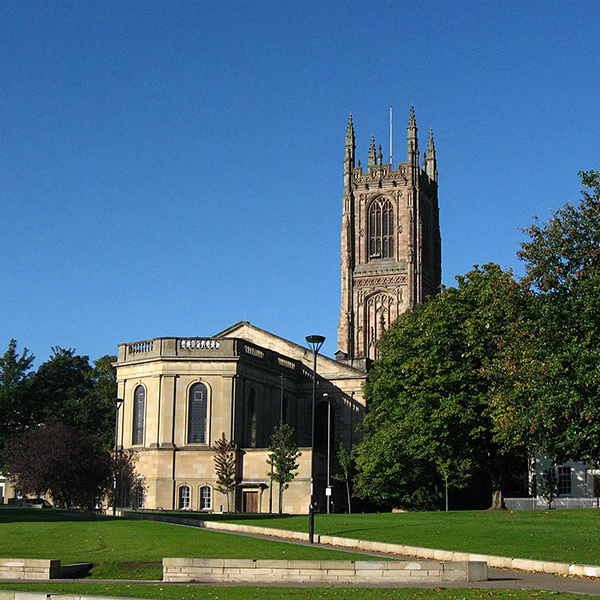
The Cathedral Church of All Saints Derby, better known as Derby Cathedral, is a cathedral church in the city of Derby, England. In 1927, it was promoted from parish church status to a cathedral, creating a seat for the Bishop of Derby, which new see was created in that year. The original church of All Saints was founded in the mid-10th century as a royal collegiate church, dedicated to All Saints. The main body of the church as it stands today is a Georgian rebuilding by James Gibbs, completed in 1725. The tower dates from the 16th century, and a retroquire was added in the 20th century.
Derby Cathedral (2021) Wikipedia.
Available at:
en.wikipedia.org/wiki/Derby_Cathedral
(Accessed: 21 Jan 2022)
Derby Gaol

Located in Friar Gate under Numbers 50 and 51, the Derby Gaol Museum is reportedly one of the most haunted spots in the country. The Gaol was in use between 1756 and 1828 and what remains has been converted into a museum and bought back to its original condition.
The owner of the gaol, Richard Felix, organises the various Ghost Walks and Tours around Derby as well as events hosted in the gaol itself.
Derby Museum and Art Gallery

Derby Museum and Art Gallery is a museum and art gallery in Derby, England. It was established in 1879, along with the first Derby Central Library, in a new building designed by Richard Knill Freeman and given to Derby by Michael Thomas Bass. The collection includes a gallery displaying many paintings by Joseph Wright of Derby; there is also a large display of Royal Crown Derby and other porcelain from Derby and the surrounding area. Further displays include archaeology, natural history, geology, military collections and world cultures. The Art Gallery was opened in 1882.
Derby Museum and Art Gallery (2021) Wikipedia.
Available at:
en.wikipedia.org/wiki/Derby_Museum_and_Art_Gallery
(Accessed: 21 Jan 2022)
Derby QUAD

Quad (branded as QUAD and also known as Derby QUAD), is an arts centre in Derby, England, first opened on September 26, 2008. Quad provides an art gallery, three cinemas (two large cinemas and a smaller relaxed room known as “The Box” showing small lesser known films), artists’ studios, and a cafe bar. The centre also has available spaces in which people can create their own artwork.
Quad (arts centre) (2021) Wikipedia.
Available at:
en.wikipedia.org/wiki/Quad_(arts_centre)
(Accessed: 21 Jan 2022)
Derwent Valley Mills World Heritage Site

Derwent Valley Mills is a World Heritage Site along the River Derwent in Derbyshire, England, designated in December 2001. It is administered by the Derwent Valley Mills Partnership. The modern factory, or ‘mill’, system was born here in the 18th century to accommodate the new technology for spinning cotton developed by Richard Arkwright. With advancements in technology, it became possible to produce cotton continuously. The system was adopted throughout the valley, and later spread so that by 1788 there were over 200 Arkwright-type mills in Britain. Arkwright’s inventions and system of organising labour was exported to Europe and the United States.
Derwent Valley Mills (2021) Wikipedia.
Available at:
en.wikipedia.org/wiki/Derwent_Valley_Mills
(Accessed: 21 Jan 2022)
Dovedale

Dovedale is a valley in the Peak District of England. The land is owned by the National Trust, and annually attracts a million visitors. The valley was cut by the River Dove and runs for just over three miles (5 km) between Milldale in the north and a wooded ravine near Thorpe Cloud and Bunster Hill in the south. In the wooded ravine, a set of stepping stones cross the river and there are two caves known as the Dove Holes.
Dovedale’s other attractions include rock pillars such as Ilam Rock, Viator’s Bridge, and the limestone features Lovers’ Leap and Reynard’s Cave.
Dovedale (2021) Wikipedia.
Available at:
en.wikipedia.org/wiki/Dovedale
(Accessed: 21 Jan 2022)
Elvaston Castle Country Park

Elvaston Castle is a stately home in Elvaston, Derbyshire, England. The Gothic Revival castle and surrounding parkland is run and owned by Derbyshire County Council as a country park known as Elvaston Castle Country Park. The country park has 200 acres (0.81 sq km) of woodlands, parkland and formal gardens.
Elvaston Castle (2021) Wikipedia.
Available at:
en.wikipedia.org/wiki/Elvaston_Castle
(Accessed: 21 Jan 2022)
Eyam
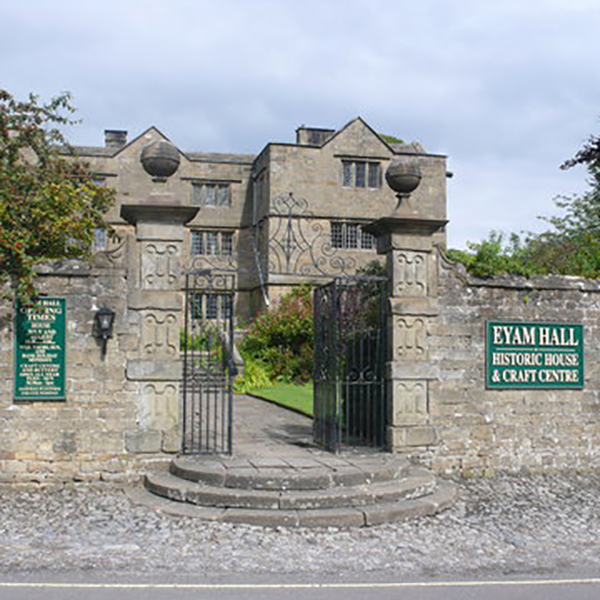
Eyam is an English village and civil parish in the Derbyshire Dales that lies within the Peak District National Park. There is evidence of early occupation by Ancient Britons on the surrounding moors and lead was mined in the area by the Romans. A settlement was founded on the present site by Anglo-Saxons, when mining was continued and other industries later developed. However, Eyam’s main claim to fame is the story of how the village chose to go into isolation so as to prevent infection spreading after bubonic plague was discovered there in 1665.
In the later 20th century the village’s sources of livelihood largely disappeared. The local economy now relies on the tourist trade, with Eyam being promoted as “the plague village”.
Eyam (2021) Wikipedia.
Available at:
en.wikipedia.org/wiki/Eyam
(Accessed: 21 Jan 2022)
Haddon Hall

Haddon Hall is an English country house on the River Wye near Bakewell, Derbyshire, a former seat of the Dukes of Rutland. It is the home of Lord Edward Manners (brother of the incumbent Duke) and his family. It has been described as ‘the most complete and most interesting house of [its] period’. The origins of the hall are from the 11th century, with additions at various stages between the 13th and the 17th centuries, latterly in the Tudor style.
The Vernon family acquired the Manor of Haddon by a 12th-century marriage between Sir Richard de Vernon and Alice Avenell, daughter of William Avenell II. Four centuries later, in 1563, Dorothy Vernon, the daughter and heiress of Sir George Vernon, married John Manners, the second son of Thomas Manners, 1st Earl of Rutland. A legend grew up in the 19th century that Dorothy and Manners eloped. The legend has been made into novels, dramatisations and other works of fiction. She nevertheless inherited the Hall, and their grandson, also John Manners, inherited the Earldom in 1641 from a distant cousin. His son, another John Manners, was made 1st Duke of Rutland in 1703. In the 20th century, another John Manners, 9th Duke of Rutland, made a life’s work of restoring the hall.
Haddon Hall (2021) Wikipedia.
Available at:
en.wikipedia.org/wiki/Haddon_Hall
(Accessed: 21 Jan 2022)
Hardwick Hall

Hardwick Hall in Derbyshire is an architecturally significant country house from the Elizabethan era, a leading example of the Elizabethan prodigy house. Built between 1590 and 1597 for Bess of Hardwick, it was designed by the architect Robert Smythson, an exponent of the Renaissance style. Hardwick Hall is one of the earliest examples of the English interpretation of this style, which came into fashion having slowly spread from Florence. Its arrival in Britain coincided with the period when it was no longer necessary or legal to fortify a domestic dwelling.
After ownership for centuries by the Cavendish family and the line of the Earl of Devonshire and the Duke of Devonshire, ownership of the house was transferred to the Treasury in 1956 and then to the National Trust in 1959. The building was ruinous and required stabilisation and a subsequent restoration.
The Hall is fully open to the public and received 298,283 visitors in 2019.
Hardwick Hall (2021) Wikipedia.
Available at:
en.wikipedia.org/wiki/Hardwick_Hall
(Accessed: 21 Jan 2022)
High Peak Trail & Middleton Top Visitor Centre

The High Peak Trail is a 17 mile (27 km) trail for walkers, cyclists and horse riders in the Peak District of England. Running from Dowlow, near Buxton, to High Peak Junction, Cromford, it follows the trackbed of the former Cromford and High Peak Railway, which was completed in 1831 to carry minerals and goods between the Cromford Canal wharf at High Peak Junction and the Peak Forest Canal at Whaley Bridge.
At Middleton Top there is a visitor centre, with car park and toilets. Cycles can also be hired here.
High Peak Trial (2021) Wikipedia.
Available at:
en.wikipedia.org/wiki/High_Peak_Trail
(Accessed: 21 Jan 2022)
Kedleston Hall
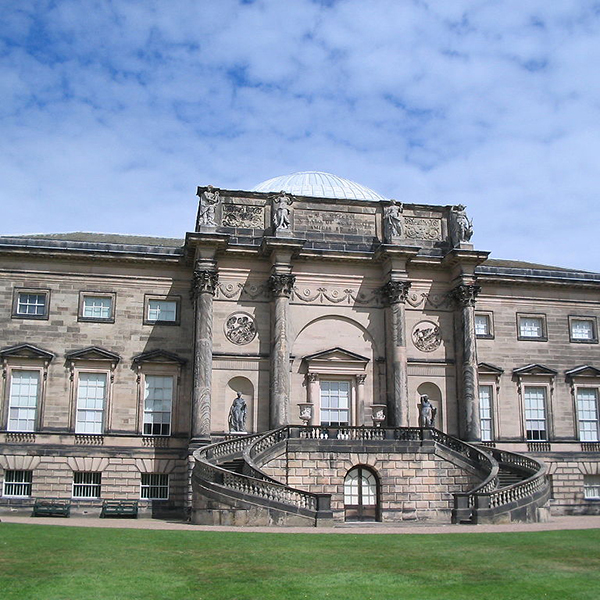
Kedleston Hall is a neo-classical manor house, and seat of the Curzon family, located in Kedleston, Derbyshire, approximately four miles [6km] north-west of Derby. The medieval village of Kedleston was demolished in 1759 by Nathaniel Curzon to make way for the manor. All that remains of the original village is the 12th century All Saints Church, Kedleston. The Curzon family is an English aristocratic family tracing back to 1066. Members of the family have held 14 hereditary titles such as: Marquess Curzon of Kedleston, Earl Howe, Earl Curzon of Kedleston, Viscount Curzon, Viscount Scarsdale, Viscounts Howe, Curzon of Kedleston, Baron Scarsdale, Baron Ravensdale, Manor of Curzon, Baron Howe, Baron Curzon, Baronet Mosley, and Baronet Kedleston Hall.
Kedleston Hall (2021) Wikipedia.
Available at:
en.wikipedia.org/wiki/Kedleston_Hall
(Accessed: 21 Jan 2022)
Matlock

Matlock is the county town of Derbyshire, England. It is situated in the south-eastern part of the Peak District, with the National Park directly to the west. The town is twinned with the French town of Eaubonne. The former spa resort of Matlock Bath lies immediately south of the town on the A6. The civil parish of Matlock Town had a population in the 2011 UK census of 9,543. The population of the wider Matlock urban area (including Darley Dale, Tansley, Hackney and Matlock Bath) is approximately 20,000.
Matlock is nine miles (14 km) south-west of Chesterfield and in easy reach of the cities of Derby (19 miles), Sheffield (20 miles) and Nottingham (29 miles); the Greater Manchester conurbation is 30 miles away. Matlock is within the Derbyshire Dales district, which also includes the towns of Bakewell and Ashbourne, as well as Wirksworth. The headquarters of Derbyshire County Council are in the town.
Matlock (2021) Wikipedia.
Available at:
en.wikipedia.org/wiki/Matlock,_Derbyshire
(Accessed: 21 Jan 2022)
Matlock Bath

Matlock Bath is a village and civil parish in Derbyshire, England. It lies in the Peak District, south of Matlock on the main A6 road and approximately halfway between Buxton and Derby. The population of the civil parish as of the 2011 census was 753. Originally built at the head of a dead-end dirt road running alongside the valley of the River Derwent from Matlock itself, the locality developed in the 19th century as a residential and spa town and still thrives on tourism. Development is naturally very restricted owing to the steep hillsides, with the majority of buildings on one side of the valley with only footbridges across the river. The road was upgraded and made into a through-way, now designated A6, avoiding the previous old coaching road approach to Matlock from Cromford over very steep hills near to the Riber plateau area.
Matlock Bath (2021) Wikipedia.
Available at:
en.wikipedia.org/wiki/Matlock_Bath
(Accessed: 21 Jan 2022)
Museum of Making

Derby Silk Mill, formerly known as Derby Industrial Museum, is a museum of industry and history in Derby, England. The museum is located on the former site of Lombe’s Mill, a historic silk mill which marks the southern end of the Derwent Valley Mills World Heritage Site. The site opened as Derby’s Industrial Museum, on November 29, 1974. A £17 million redevelopment scheme started in 2016 and the museum reopened under the new name of the Museum of Making on May 21, 2021.
Derby Silk Mill (2021) Wikipedia.
Available at:
en.wikipedia.org/wiki/Derby_Silk_Mill
(Accessed: 21 Jan 2022)
Pickford’s House
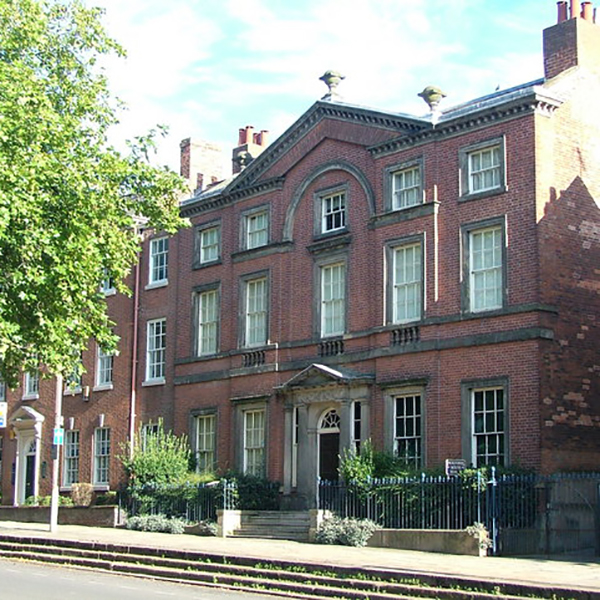
Pickford’s House Museum of Georgian Life and Costume is in Derby, England. It is named after architect Joseph Pickford, who built it as his family home in 1770. It was opened as a museum in 1988. The building is Grade I listed.
Pickford’s House Museum (2021) Wikipedia.
Available at:
https://en.wikipedia.org/wiki/Pickford%27s_House_Museum
(Accessed: 21 Jan 2022)
Sudbury Museum of Childhood

Sudbury Hall is a country house in Sudbury, Derbyshire, England. One of the country’s finest Restoration mansions, it has Grade I listed building status.
The National Trust Museum of Childhood is housed in the 19th-century servants’ wing of Sudbury Hall.
Sudbury Hall (2021) Wikipedia.
Available at:
en.wikipedia.org/wiki/Sudbury_Hall
(Accessed: 21 Jan 2022)
Thornbridge Hall

Thornbridge Hall is a large English country house situated near the village of Great Longstone in the local government district of Derbyshire Dales in Derbyshire. It is a Grade II listed building.
Cromford Mill (2022 Wikipedia.
Available at:
en.wikipedia.org/wiki/Thornbridge_Hall
(Accessed: 21 Jan 2022)
Wirksworth

Wirksworth is a market town in the Derbyshire Dales district of Derbyshire, England. Its population of 5,038 in the 2011 census was estimated at 5,180 in 2019. Wirksworth contains the source of the River Ecclesbourne. The town was granted a market charter by Edward I in 1306 and still holds a market on Tuesdays in the Memorial Gardens. The parish church of St Mary’s is thought to date from 653. The town developed as a centre for lead mining and stone quarrying. Many lead mines were owned by the Gell family of nearby Hopton Hall.
Wirksworth (2021) Wikipedia.
Available at:
en.wikipedia.org/wiki/Wirksworth
(Accessed: 21 Jan 2022)


